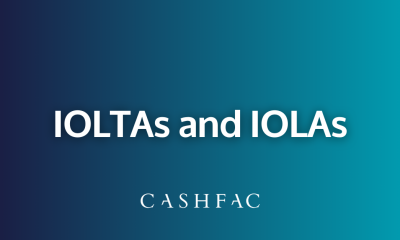Digital Cash – Cashfac’s Perspective Based on Operational Experience
This article looks at how digital cash operates and its essential elements of operation, including the opportunities it offers for vulnerable people in care and communities to be better protected
Digital cash improves access, increases the velocity of money, provides resilience in payment networks, and enhances the support for vulnerable user groups. Digital cash has an important role to play in the financial care of vulnerable people which would benefit from a digital cash initiative from Government. This matter is also explored in this narrative.
Fungibility
Digital cash is narrowly defined by some as point-to point electronic payment without passing the payment through bank accounts or cards. That’s simplistic because (1) money has to get into the digital cash central store of value, and (2) merchants must be able to get money out of digital cash, at some stage, into the merchant’s bank account in order for that merchant to pay wages and supply chains and (3) the total of digital money in circulation must be matched by a segregated reconcilable liquid asset on a strong balance sheet.
We describe the principles of ready movement between digital cash and bank accounts as fungibility.
In its full sense therefore, digital cash means the store of value and transfer of money without the substantial dependence on traditional payment networks. The area of dependence on existing payment networks is in loading new money into a digital cash wallet and withdrawal into a bank account typically when a merchant downloads into a bank account money collected in digital cash.
Digital cash can include prepaid cards but it depends on how the prepaid card is loaded. If it is loaded from a digital cash account then it is a component of digital cash.
Central Bank Digital Cash (CBDC)
Central Bank Digital Cash (CBDC) is a state-wide digital payment system sponsored by a central bank. The central bank holds the store of digital cash in the CBDC. A central bank is interested in CBDC because of the added resilience such a payment network and because of societal benefit.
Network Resilience
For network level resilience the mobile device used by payers and payees must be able to transfer cash offline, that is while one or both of payer and payee devices are out of Internet connection. As the devices come back into connection the devices synchronise with the digital cash cloud. Other payments that have originated independently of the device and have been executed by CBDC in cloud (eg recurring payments) will be downloaded from the cloud when connected. Clearly there is some degree of credit risk exposure to manage in that convergence.
Convergence
Convergence (sometimes referred to as eventual convergence) refers to the synchronisation of the client device and CBDC cloud when the device reconnects. Convergence depends upon a record store / database on the client device as well as in the CBDC cloud. These two record stores must reconcile, such reconciliation to be continuous with a catch up at convergence.
This duplex store and reconciliation between client device and cloud is observable on Cashfac’s platform which works by a combination of (1) an account database on the client device of transactions and balances (2) queuing on the client device of transactions executed while the device is offline awaiting transmission of the new transaction data to the CBDC cloud; (2) queueing in the CBDC cloud of transactions executed by the CBDC cloud while the client device is offline; and (3) transaction tracking that prevents duplicates and detects missing transactions.
Financial Resilience
All digital cash in customer accounts must be represented in a store of liquid assets ring-fenced from all other financial operations of the custodian. This has two perspectives: balance sheet and continuous reconciliation.
Balance sheet resilience is the segregation of the pool of assets that represent or back up the total of all digital cash balances held on the digital cash network.
Continuous reconciliation is the proof that the sum of digital cash accounts equals the segregated balance on the balance sheet. That reconciliation is dynamic and continuous. It is dynamic because of latency in the digital exchange between device and the centre including in relation to transactions performed while the device is off line and generally in respect of transactions in message queues. Time stamping of transactions and balances is essential for reconciliation in regression.
The relevance of Digital Cash to Care Services for Vulnerable People
Digital cash offers an opportunity for vulnerable people in care and communities to be better protected and for care services to be offered a lower cost way of administering the financial side of care.
There is currently a digital gap in payments between, on the one side, DWP and pension schemes in the UK, and care services on the other. This is observable in the care accounts platform that Cashfac operates for the care of vulnerable people.
Digital cash means that payments are immediately loaded to the client’s account without the need for multiple reconciliation points in the bank payment chain.
Given that DWP is probably the largest payment generator in the UK and that there is so much dependence on these payments it would seem that DWP should operate a digital cash platform.
The number of unbanked people has reduced in recent years as Universal Credit and card payment have increasingly dominated life. Whether the requirement to be banked is good for society is a political matter. It certainly requires the banks to perform a public service that is not necessarily in the interests of them commercially or of society.
That latter societal point can be illustrated by what happens to a bank service as a person begins to become vulnerable, say at the onset of dementia. Although bank staff are guided as to what action to take in response to requests from the public (families and friends of the vulnerable person) the service is not in the mainstream of everyday activity and the number of branches is reducing so that access is patchy. In any case the need for care is probably more visible at point of sale rather than at the bank.
Cashfac technology is used in the (financial) care of vulnerable people. Removing the disconnect in the payment processes by the use of digital cash would reduce the cost and risk of getting the money to the people in need and releasing some of the care budget and effort expended in financial matters.
Find Out More
For more information please contact one of our experts using the form below.


